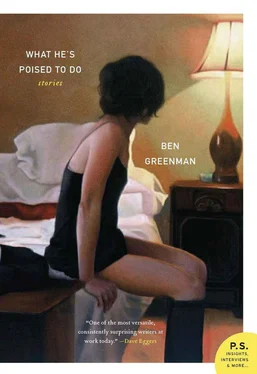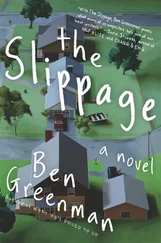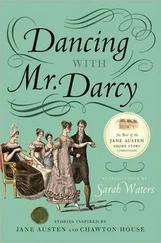The next time the car comes to rest, it is not at a stop sign or a red light. What are some of the other choices? It is overturned. Sophie is out on the road under the hood. Inertia has brought her there. Broken glass is spread around like rhythm. A bone comes through her arm. An artery in her thigh is laid open for all the world to see. “Look at my blood!” she wants to say. It is healthy blood, and it is running out. Time is running out with it. She is growing lighter than air. She has a sudden urge to weigh herself.
THE GOVINDAN ANANTHANARAYANAN ACADEMY FOR MORAL AND ETHICAL PRACTICE AND THE TREATMENT OF SADNESS RESULTING FROM THE MISAPPLICATION OF THE ABOVE

THE ACADEMY LASTED ONLY A DECADE, THOUGH THE BUILDING that housed it, a former boomerang factory, still stands on the border between India and Australia. It is a modest edi-fice, low and long, built in 1912 by the firm of Eyre and Ananthanarayanan, which is today best known for its construction of warehouses throughout Asia but which was at the time interested primarily in erecting a structure for the manufacture of the company’s flagship product. Sections of the factory were rebuilt several times during its first decade, but the façade has been preserved unaltered since 1920. It is a distinctive façade. There is one window shaped like a boomerang and another shaped like the head of Markandeya, and midway between them a large iron door, above which is inscribed the official slogan of the Kaybee Karmic Boomerang Company, “We’ll keep you coming back for more,” which was coined by Andrew Eyre, the son of one of the founders, in 1914. Above the door on the inside are two signs, one above the other, that were installed soon after. The top sign bears a picture of a piglike man surrounded by what looks like fire. No one understands that sign. Below that, there is a sign that says, “How do you feel when the person who made you the saddest feels sad?” This same question appeared, printed on a small laminated card, in selected boxes of the company’s first shipment of Karmic Boomerangs, which were sent to toy stores and Hindu bookstores. Other questions in the series included “When a thief is robbed, should you laugh or cry?” and “How long must the good man wait for his lifetime good deeds to redound to him?” Govindan Ananthanarayanan, also the son of one of the founders, composed eight of these questions in all, and affixed one to the longer arm of each Karmic Boomerang. The question above the factory door was his favorite of them. It was the one he kept coming back to—“as you might expect,” he joked, to the very mild amusement of his family and colleagues — and for that reason he had it turned it into a sign.
The question was interesting to Govindan mainly because he could not answer it. Karmic Boomerangs, which sold slowly at first, became, in the middle years of the decade, a huge hit in both Sydney and Bombay. You could see them everywhere in public meadows and beaches. One writer noted that “these chevrons of virtue fill the sky like a child’s drawings of birds fill a child’s drawings.” Their vogue was short-lived, however. They were considered novelties, though Govindan Ananthanarayanan insisted that they were in fact “functioning ethical devices,” and as quickly as they rose to prominence they fell away into obscurity. Both of Kaybee’s founding families had made small fortunes with the ethical boomerang by then, and while the Eyres went on to become tycoons in the construction industry — taking with them the Eyre and Ananthanarayanan name, which allowed them to do business in India as well as Australia — the Ananthanarayanans, and particularly Govindan, embarked on a more scholarly course. This was not entirely surprising. Before Govindan had composed the eight questions that were packaged with the Karmic Boomerang, he had briefly attended Oxford University, where he had begun to assemble research for a thesis on James Harris Fairchild. Whether Govindan was inspired directly by his father’s company’s boomerang has been lost to history, but what is known is that following the conversion of the company to a construction firm, he reopened the factory as an academy of ethics. Initially, the curriculum was restricted to only nine courses, eight of which were based on the questions from the Kaybee cards. (The ninth was a late addition entitled “Should you ever lie to a man who tells you that he has always told the truth, but whom you suspect of untruth?”) Govindan himself taught “How do you feel when the person who made you the saddest feels sad?”
Govindan’s course notes no longer exist, and as enrollment was extremely limited in those early years, we do not have any extant accounts from the perspective of students. We do, however, have a letter that Govindan wrote to a friend of his, a man named James Rouse, that deals with this same set of questions. A small amount of background is necessary. Govindan was a married man. He had, like so many young Indians, consented to an arranged marriage; his bride to be was Prabhavati Priyadarshini, a young woman whose parents were friends of the Ananthanarayanans. The wedding took place in 1922, and accounts of it suggest that it was generally happy. Three years earlier, though, when Govindan was first informed of the match, he rebelled, insistent that he be allowed to find his own partner. Shortly after, in the summer of 1920, while studying once again at Oxford, he took notice of a young Englishwoman, Louisa Pelham. She was nineteen at the time. Govindan and Louisa embarked on a short and rocky romance that summer, and when he returned to Bombay that fall, he announced to his father that he would not marry Priyadarshini. The family refused to recognize Gonvindan’s refusal. The next summer, Govindan returned to Oxford, only to find that Louisa had agreed to marry another man. Throughout that winter, he expressed his suffering in a series of letters to Rouse, an Englishman he had befriended who was also close friends with Andrew Eyre. Most of the letters between Govindan and Rouse have been lost. This letter survives: in it, Govindan reacts to the news that Louisa’s marriage is an unhappy one, and addresses the same question that would become the focus of his course at the academy.
Dear Jim,
I received a letter from Louisa last week in which she was entirely despondent. Now and again a line would be smudged as a result of what I assume were her tears falling onto the page. The reasons, as I know you know, have to do with her marriage to Bartlett, and his treatment of her, which I am sure that you would call “beastly.” I can see you saying that precise word and shaking your head uncomprehendingly. Your failure to understand human cruelty is one of the most worthy things about you.
I have, though, a separate issue to confront. As I am sure you remember, Louisa, after taking me higher than a woman has any right to take a man, brought me lower than I thought I could go in this lifetime. It felt like I would have to ascend at least a few levels just to reach the sadness of death. It was hardly malicious on her part — after all, I was arranged to marry another woman — but it still, at the time, felt like I had been run through with a sword.
Last week, when I received her letter, and discovered within a few sentences that she was writing from a place of great sadness, I wondered how I should feel. I mean this exactly as I have said it. I did not know how to feel. We all know about the German notion of Schadenfreude, or the Scots Gaelic aighear millteach, or the Hungarian káröröm, but those define a class of reactions to the general sufferings of others. Here, I am wondering about how to react to the sadness of those who cause you sadness. I would have thought there was something in Louisa’s letter that would give me, at least for a moment, a kind of joy. She had spurned me, in a sense, and the choice she made elsewhere had turned out to be a bad one. Some would say it serves her right. But then I started thinking of the times that I would sit with her in the garden, or take walks with her, and the light that would stream from her eyes as she described the type of woman she wished to become in the world. The more vividly I remembered her presence, the more crushed I was to think that any part of that light had been extinguished by fear, exhaustion, or a sense of failure. It would be melodramatic to say that I cried her tears, but inaccurate to claim that they did not at least sting my eyes and make them water.
Читать дальше













